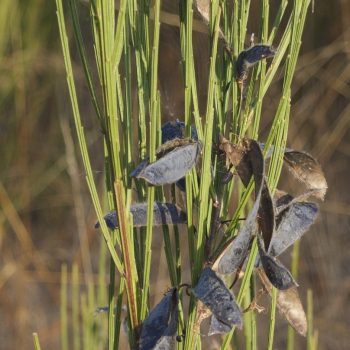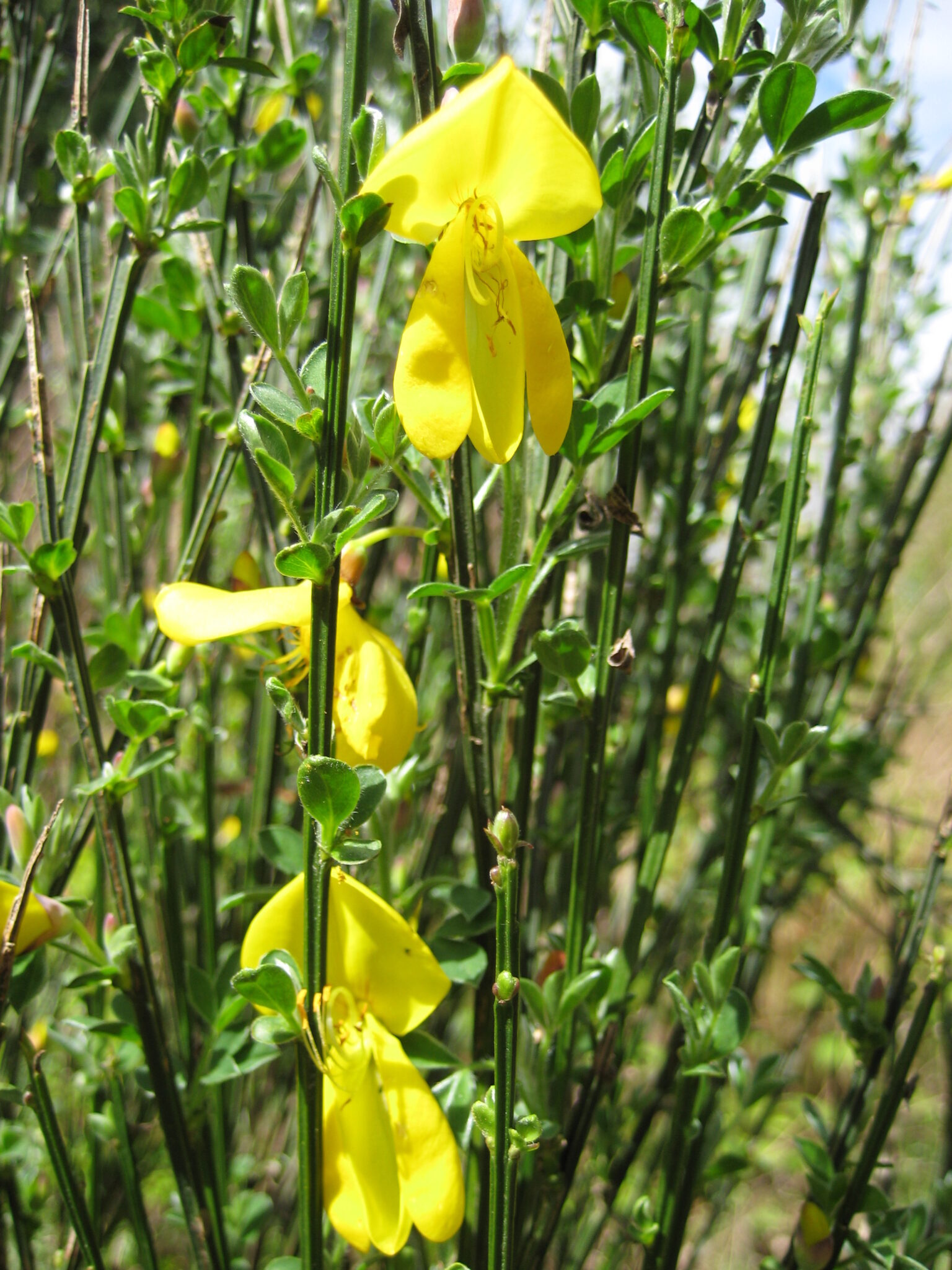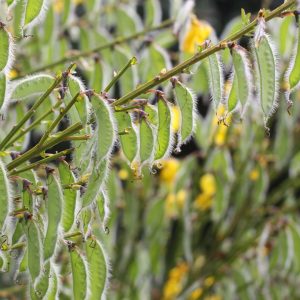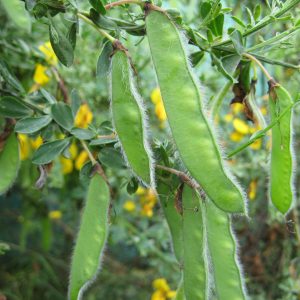When my bright yellow flowers are done,
the process of spreading has only just begun.
These black seed pods split open when dried,
spreading this invasive far and wide!

Photo credit: warrenlayberry, iNaturalist
I Spy in the Sea to Sky…
This plant is native to Scotland and was introduced to North America as an ornamental plant. Its first introduction was in the 1850s by Captain Walter Grant, who brought 3 seeds of this species to Sooke on Vancouver Island. Since then, the plant has managed to spread all across Vancouver Island and into new areas of BC. Can you guess what it is?
It’s Scotch Broom (Cytisus scoparius)! It flowers from April to June and produces seeds from June to August. From September to October, its seed pods begin to dry out. It prefers open, disturbed sites at low elevations, and is generally found along roads, railway lines, dry fields and rocky slopes. Scotch Broom is abundant in certain portions of the Sea to Sky region (i.e. Squamish and south), but has not yet infested all potential habitats. The goal is to contain the spread of Scotch Broom to ISMA 1.

Scotch Broom can be easily identified by several distinctive features:
- Small, bright, pea–like, yellow flowers that are 2 cm long.
- Green, rigid and woody stems.
- Leaves are egg-shaped to oblong, 5 – 20 mm long, and may fall off early in the year, leaving stalks bare.
- Flattened, legume-like seedpods that change from bright green to brown or black before they dry out and split.
- Each seed pod contains between 5 – 12 seeds.
- A deep, branched taproot.
How come there is so much Scotch Broom in Squamish and the lower mainland, but hardly any in Whistler and Pemberton?

The spread of any invasive species depends on many different factors, including the plant’s preferred growing conditions, pathways of spread, and methods of dispersal.
Scotch Broom is too widespread for landscape-level control in Squamish, but it has a limited distribution in Whistler and Pemberton. SSISC has a ‘containment line‘ just north of Squamish, where our field crew is working to eradicate and prevent the spread of Scotch Broom.
To sum up, there is less Scotch Broom north of Squamish because of natural factors like preferred growing conditions, as well as SSISC’s continuous effort to prevent its spread into communities north of our containment line. You can read more information about Scotch Broom and our containment line in this blog post:
Why is Scotch Broom such a concern in the Sea to Sky?
Scotch Broom poses a concern due to its aggressive spread. It reproduces both by seed and by lateral bud growth, allowing it to proliferate rapidly. Mature plants can produce up to 3,500 seedpods, and its seeds can remain viable in the soil for up to 50 years, leading to a quickly expanding seed bank.
The dense thickets of Scotch Broom pose a fire hazard due to the resinous sap in its stems (read more about invasive species and fire risk here), limits the movement of large animals, and outshades conifer seedlings. This species also displaces native plant species, and alters the nitrogen composition of the soil. It is also toxic to livestock if ingested.
Please report any sightings of Scotch Broom in the Sea to Sky.






Add Comment